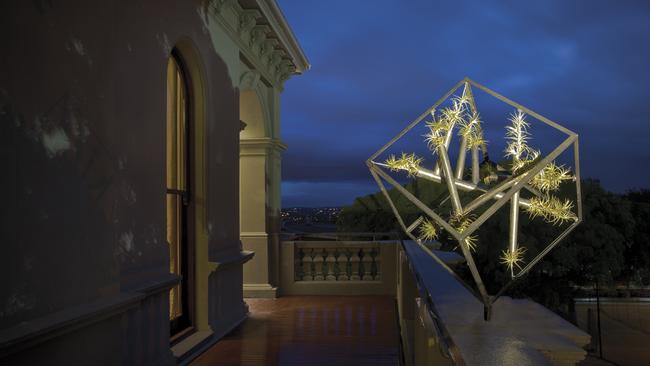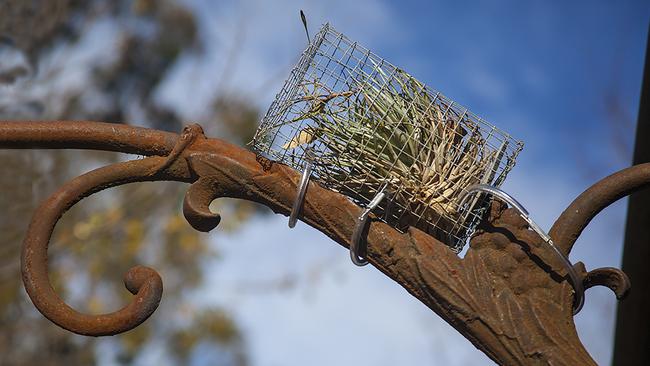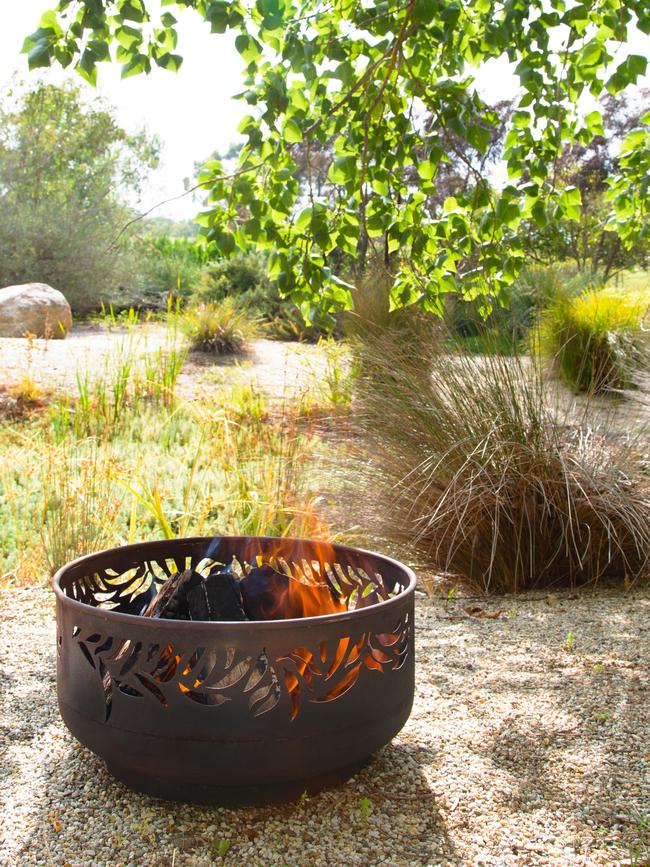Plants that can survive without soil or watering? That’s magical
If you’re after a totally undemanding houseplant, Tillandsia — or “air plants” — could be right for you. They don’t even need soil.

Plants that grow on air? Tillandsia or “air plants” really can survive without soil or water. In nature they attach to trees or rocks, absorbing moisture and nutrients directly from the air. If you’re after an undemanding houseplant, they could be right for you.
Tillandsia are in the bromeliad family; most of the 700-odd species are from central and south America. Green, soft-leafed species come from warm, humid rainforests or cloud forests, whereas those with thick, hard, silvery leaves are adapted to harsh, dry environments such as high cliff faces or deserts. Others with finer, softer, silver leaves live in exposed situations with higher rainfall. Their tiny roots, if present, are simply for attachment.
Tillandsia leaves are covered with trichomes, hair-like structures that can absorb moisture and nutrients directly from the air via mist, rain and condensation. The denser the trichomes, the more silvery the plants look. Trichomes can take up heavy metal particulates from the atmosphere, making them potentially valuable as bio-monitors.

Most tillandsia are small – only 3-20cm across – although a few can be up to a metre wide. They have unique shapes and many have unusual, brightly coloured flowers. You might know Spanish moss or old man’s beard (Tillandsia usneoides), which festoons like curly hair from tree branches, fences and powerlines in long, trailing clusters of silver. Petite tillandsia such as T. ionantha are sold glued to fridge magnets but do better attached to branches, driftwood or twig wreaths. There are dozens of forms of this tufting, silvery rosette that turn rosy red when they start to produce the vivid purple flowers. Attach them using non-toxic glue; avoid copper and treated timber.
Melbourne-based ecological artist Lloyd Godman specialises in sculptures and installations using tillandsia. He started testing them at extreme urban sites such as level 92 of Melbourne’s Eureka Tower and they’ve multiplied despite exposure to intense heat, high UV, dry, hail and high winds. Not all the plants in his Tillandsia SWARM project have survived but most have – even at Essendon airport, where they’re blasted with jet exhaust fumes (see lloydgodman.net).
Godman grows thousands of tillandsias, many from seed, for his outdoor sculptures, and is developing plant-covered screens for windows and skylights. Compared with vertical gardens and green roofs, they’re one-tenth the weight, with no soil or irrigation system to worry about.
Q&A
My tropical garden has had months of continual rain. Should I keep up manure on garden beds and lawn? Any other advice? Kim, Gold Coast
Heavy rain washes nutrients out of soil so applying fertiliser is a good idea, especially for densely planted gardens. Cow manure has only a small amount of nutrient; use an organic-based, general fertiliser on gardens and a lawn fertiliser on lawns. Mulch helps protect soil in heavy rain.
Our deciduous magnolia blossoms early, before winter, and many flower buds fall to the ground. How can we fix this? Ron and Sue, Wahroonga, Sydney
You can’t change when a mature tree flowers; the forces of nature are too great. It’s influenced by weather patterns (rainfall, temperatures) and location – trees in sunnier, warmer spots usually flower earlier than those in colder, shadier spots. Buds can fall early due to attack by birds, possums, insects, or strong winds.
High winds snapped off our tree dahlia. Can I take cuttings? Deb Christiansen, Melbourne
The towering stems of Dahlia imperialis are a joy in late autumn. It’s usually winter when you use them for cuttings by placing stem sections horizontally in the ground, so you could try it now.

Send your questions to: helenyoungtwig@gmail.com or Helen Young, PO Box 3098, Willoughby North, NSW 2068. The best question for July wins Glow’s Ironbark Fire Pit of weathering steel, worth $139 from glowheating.com.au. June’s winner is Allison Crawley of Adelaide for her question about transplanting.




To join the conversation, please log in. Don't have an account? Register
Join the conversation, you are commenting as Logout